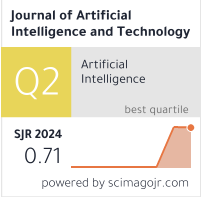Digital Restoration of Historical Buildings by Integrating 3D PC Reconstruction and GAN Algorithm
DOI:
https://doi.org/10.37965/jait.2024.0514Keywords:
3D PC reconstruction, artificial intelligence repair, GAN algorithm, stereoscopic vision, historical buildingsAbstract
Historical architecture is an important carrier of cultural and historical heritage in a country and region, and its protection and restoration work plays a crucial role in the inheritance of cultural heritage. However, the damage and destruction of buildings urgently need to be repaired due to the ancient age of historical buildings and the influence of natural environment and human factors. Therefore, an artificial intelligence repair technology based on three-dimensional (3D) point cloud (PC) reconstruction and generative adversarial networks (GANs) was proposed to improve the precision and efficiency of repair work. First, in-depth research on the principles and algorithms of 3D PC data processing and GANs should be conducted. Second, a digital restoration framework was constructed by combining these two artificial intelligence technologies to achieve precise and efficient restoration of historical buildings through continuous adversarial learning processes. The experimental results showed that the errors in the restoration of palace buildings, defense walls, pagodas, altars, temples, and mausoleums were 0.17, 0.12, 0.13, 0.11, and 0.09, respectively. The technique can significantly reduce the error while maintaining the high-precision repair effect. This technology with artificial intelligence as the core has excellent accuracy and stability in the digital restoration. It provides a new technical means for the digital restoration of historical buildings and has important practical significance for the protection of cultural heritage.
Published
How to Cite
Issue
Section
License
Copyright (c) 2024 Authors

This work is licensed under a Creative Commons Attribution 4.0 International License.





